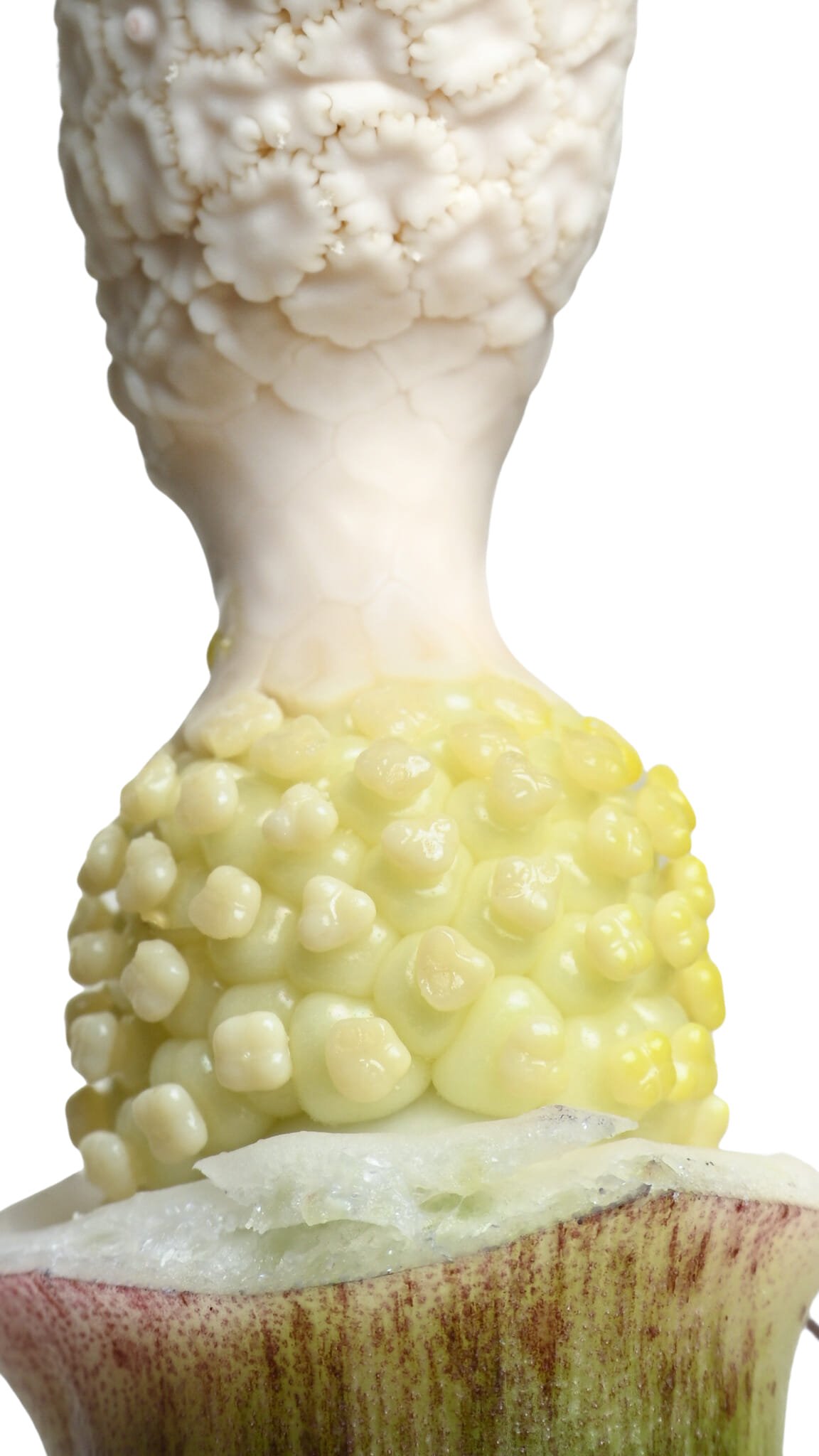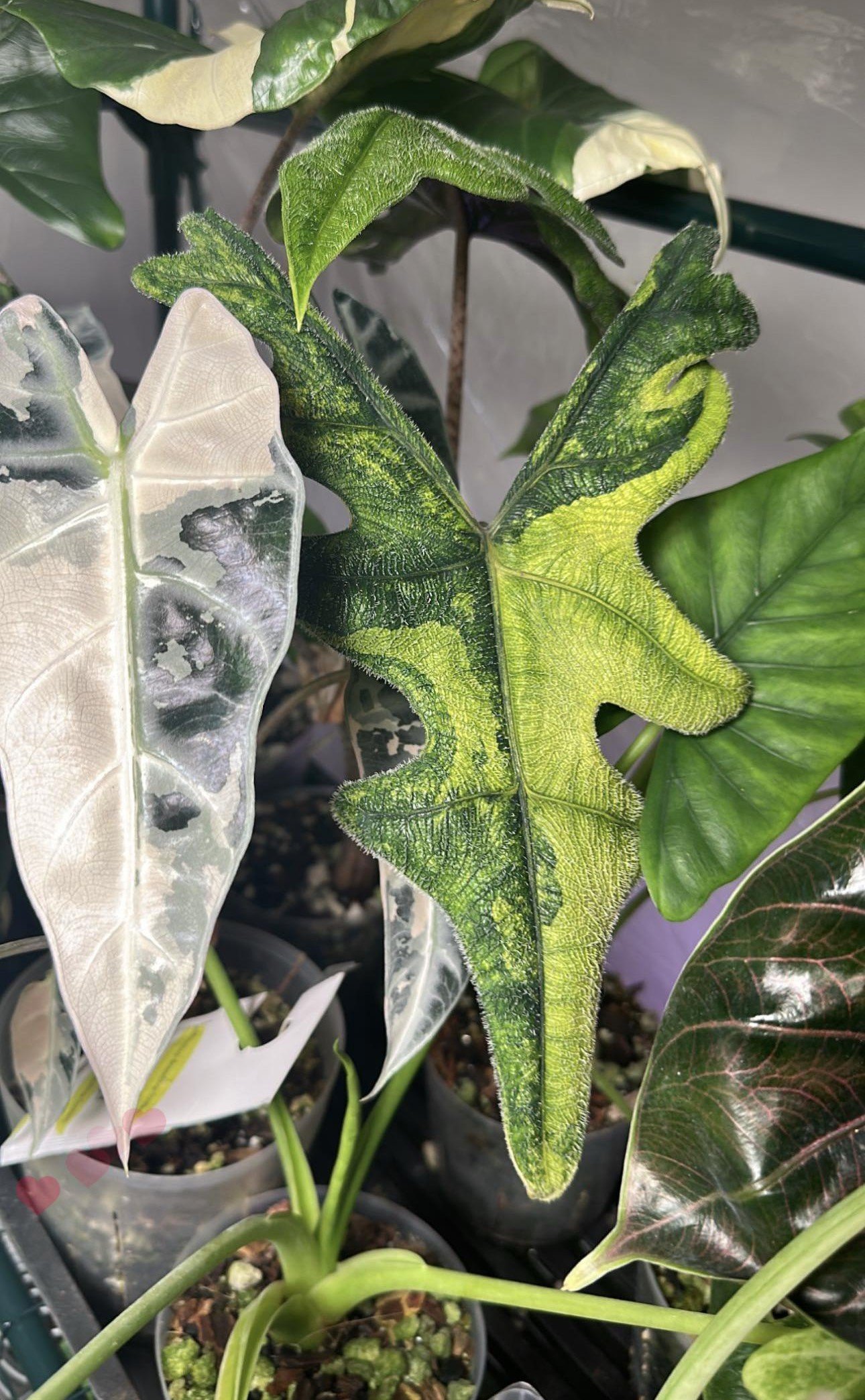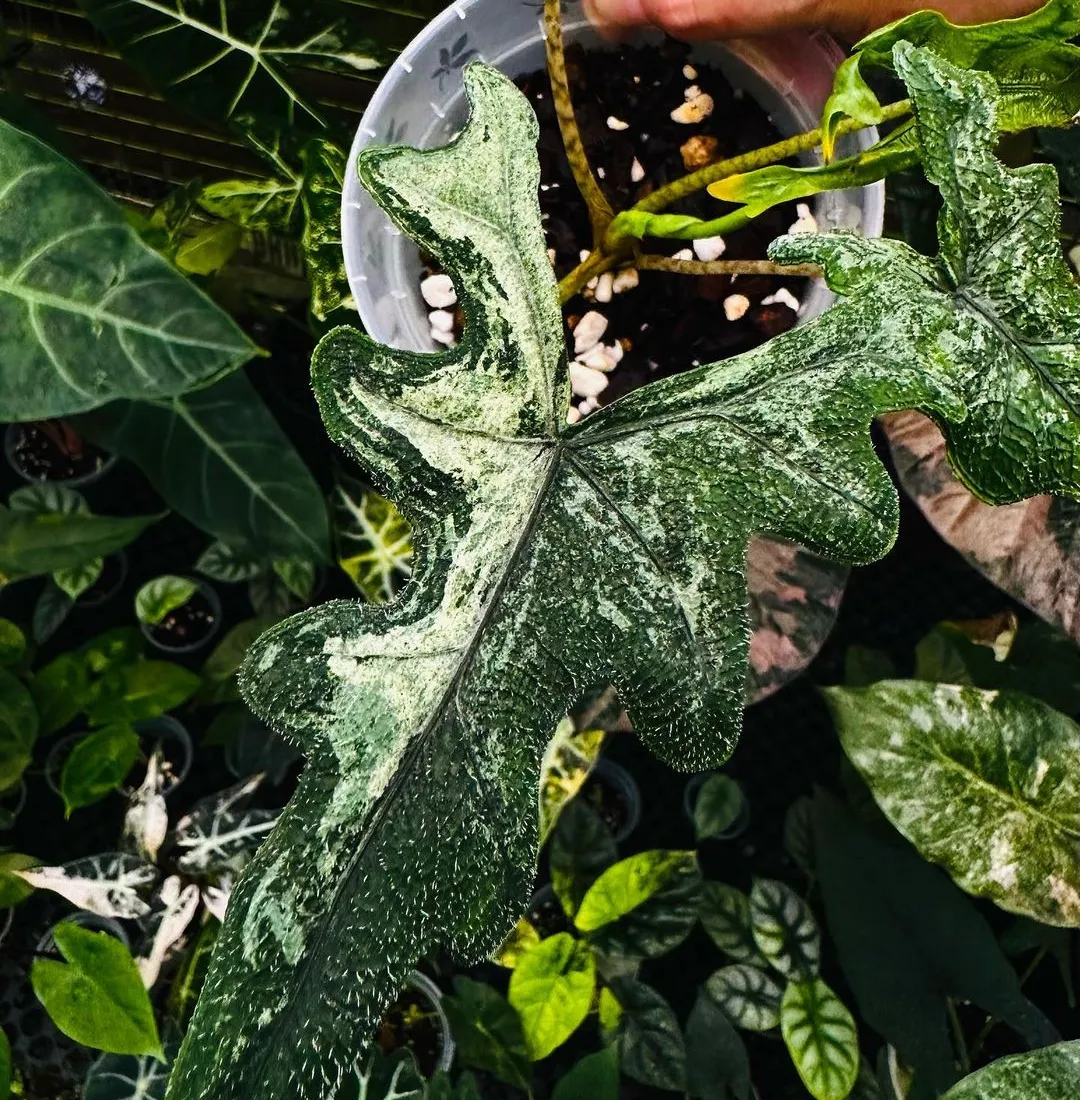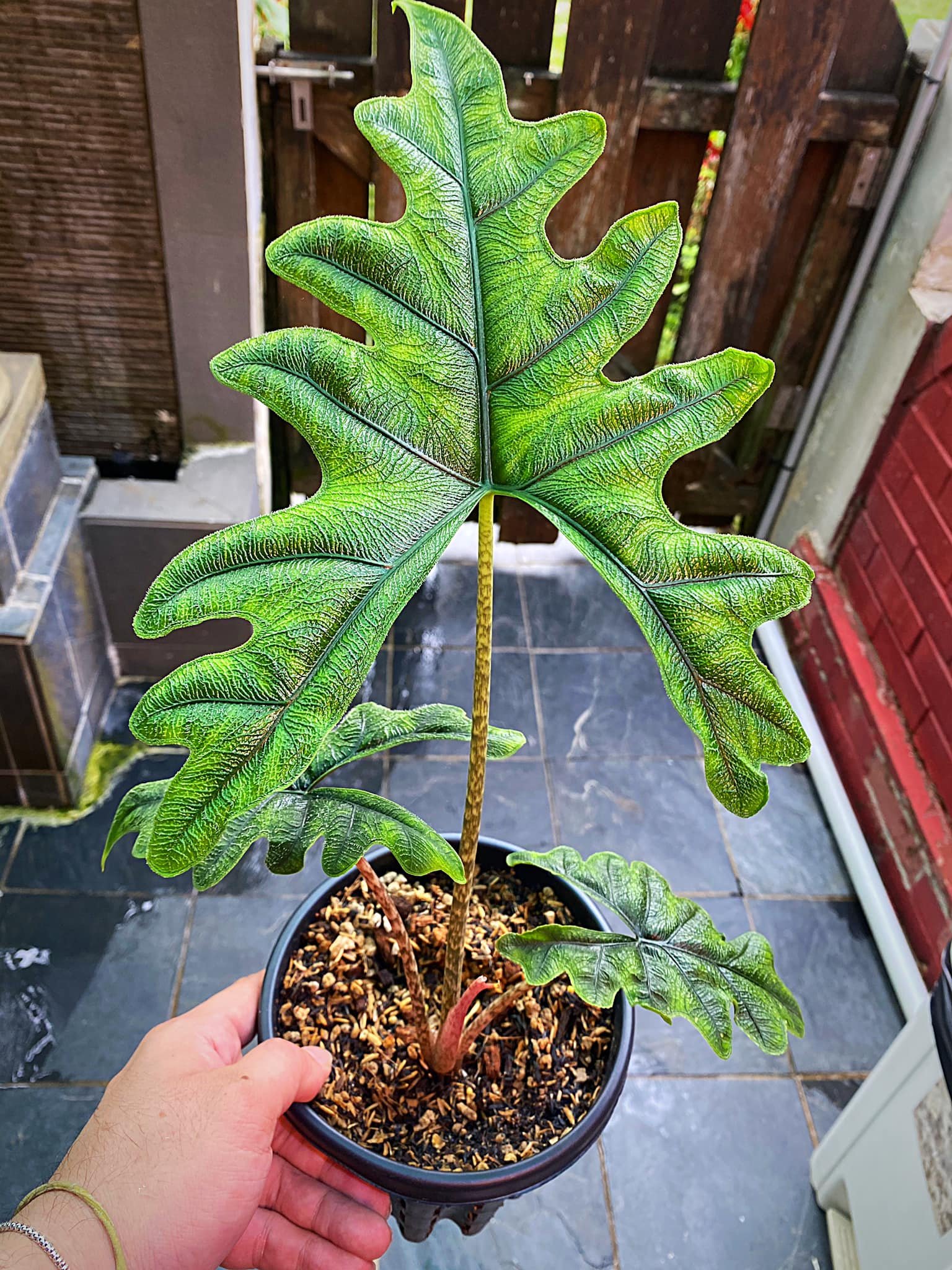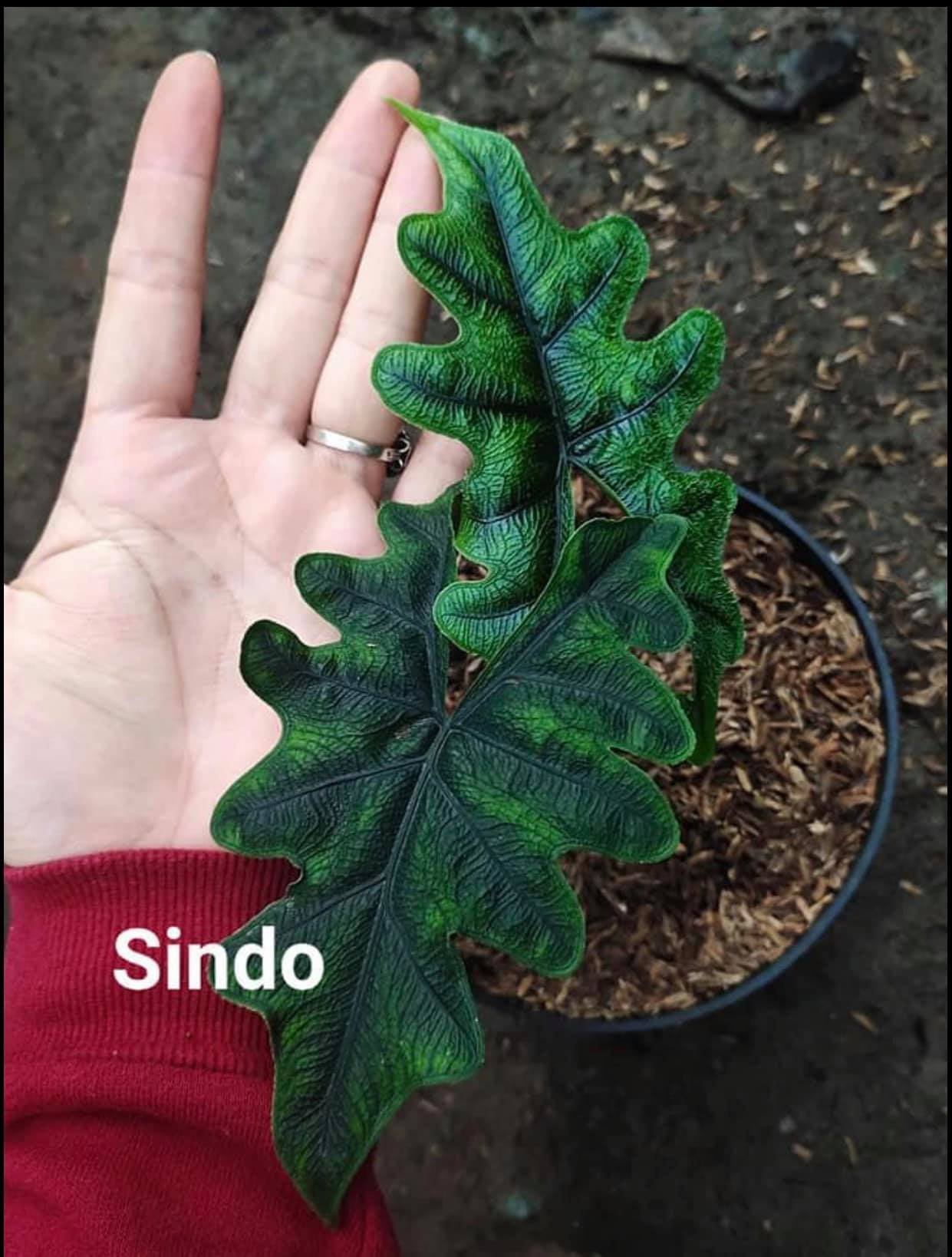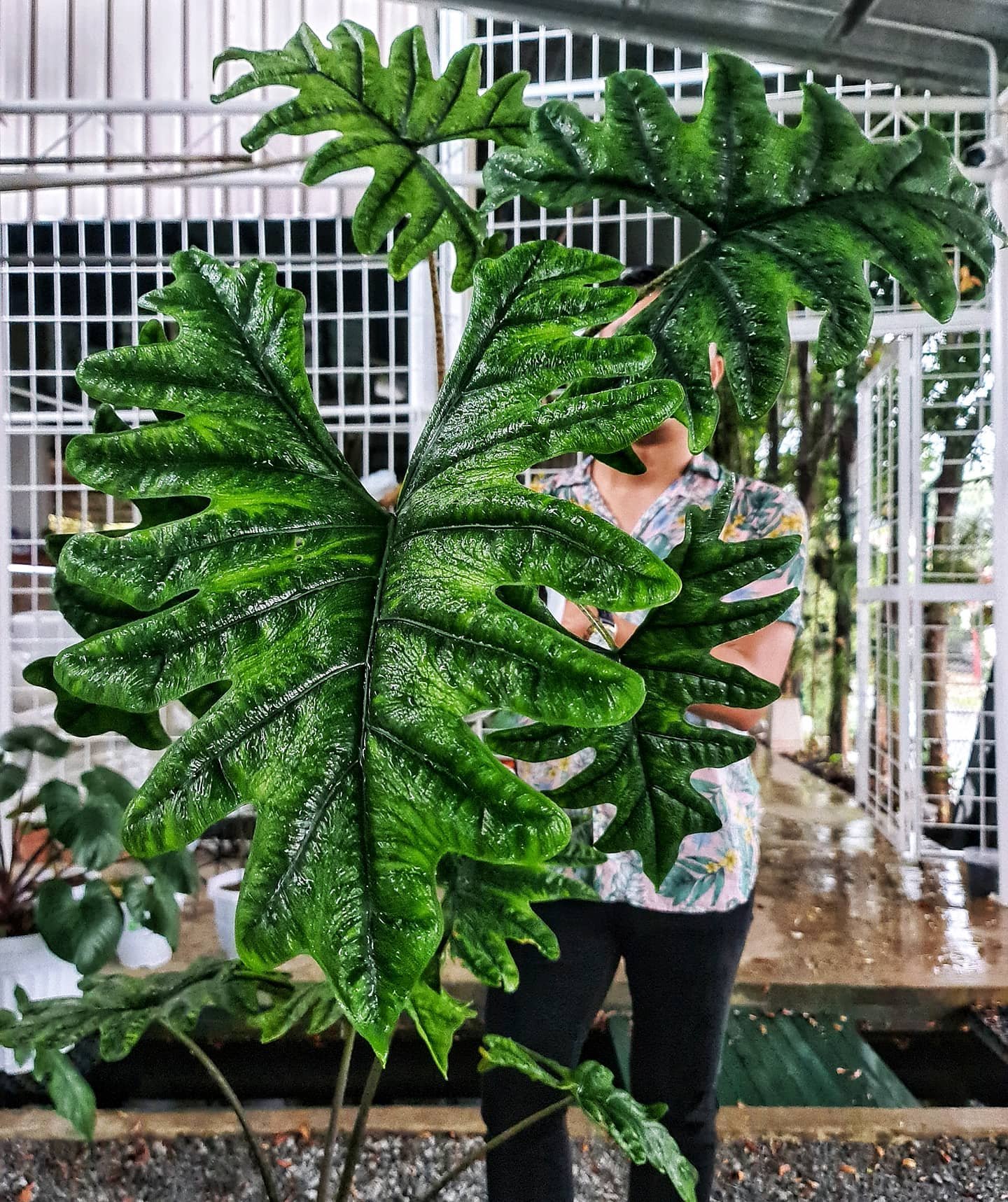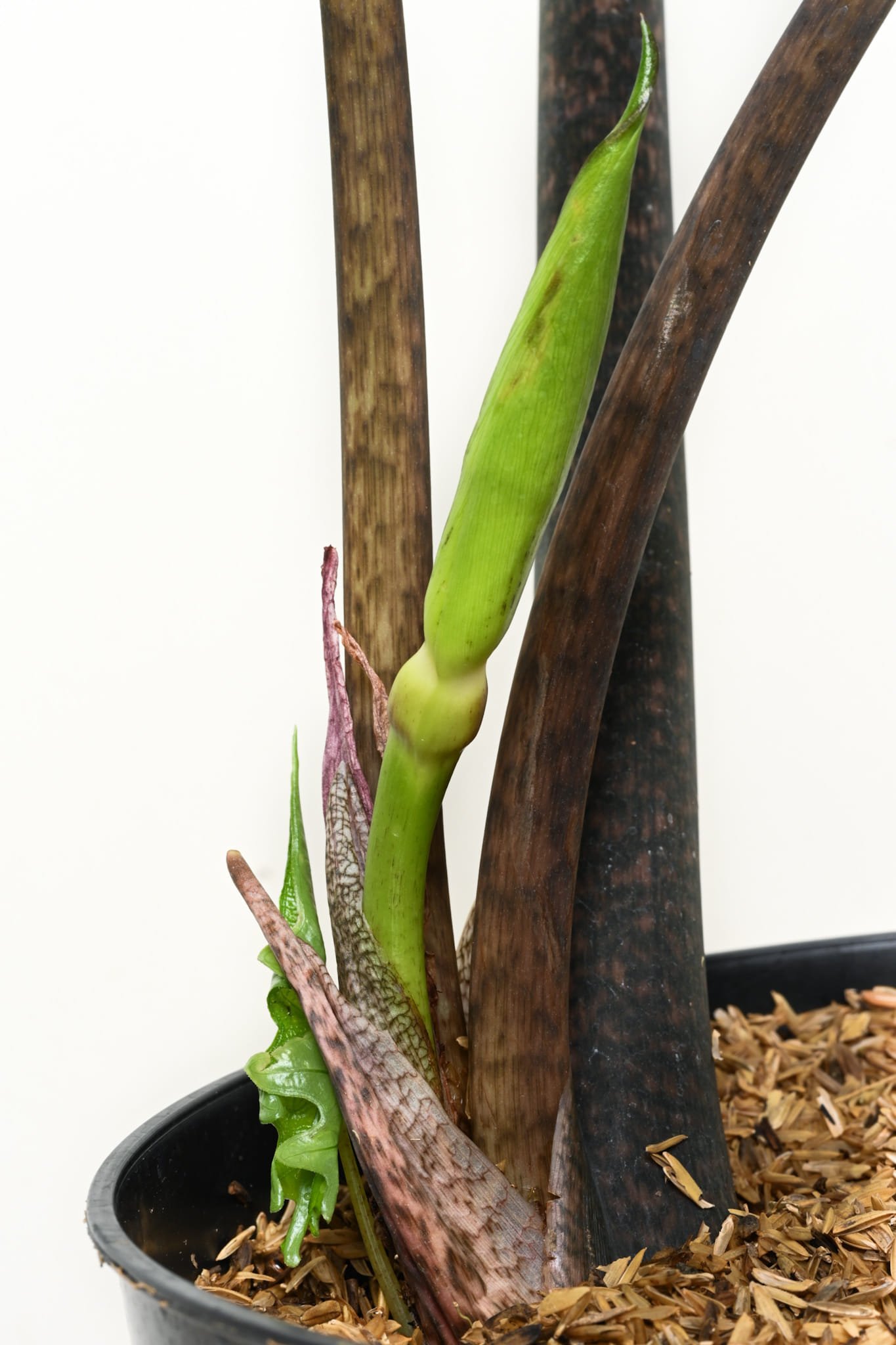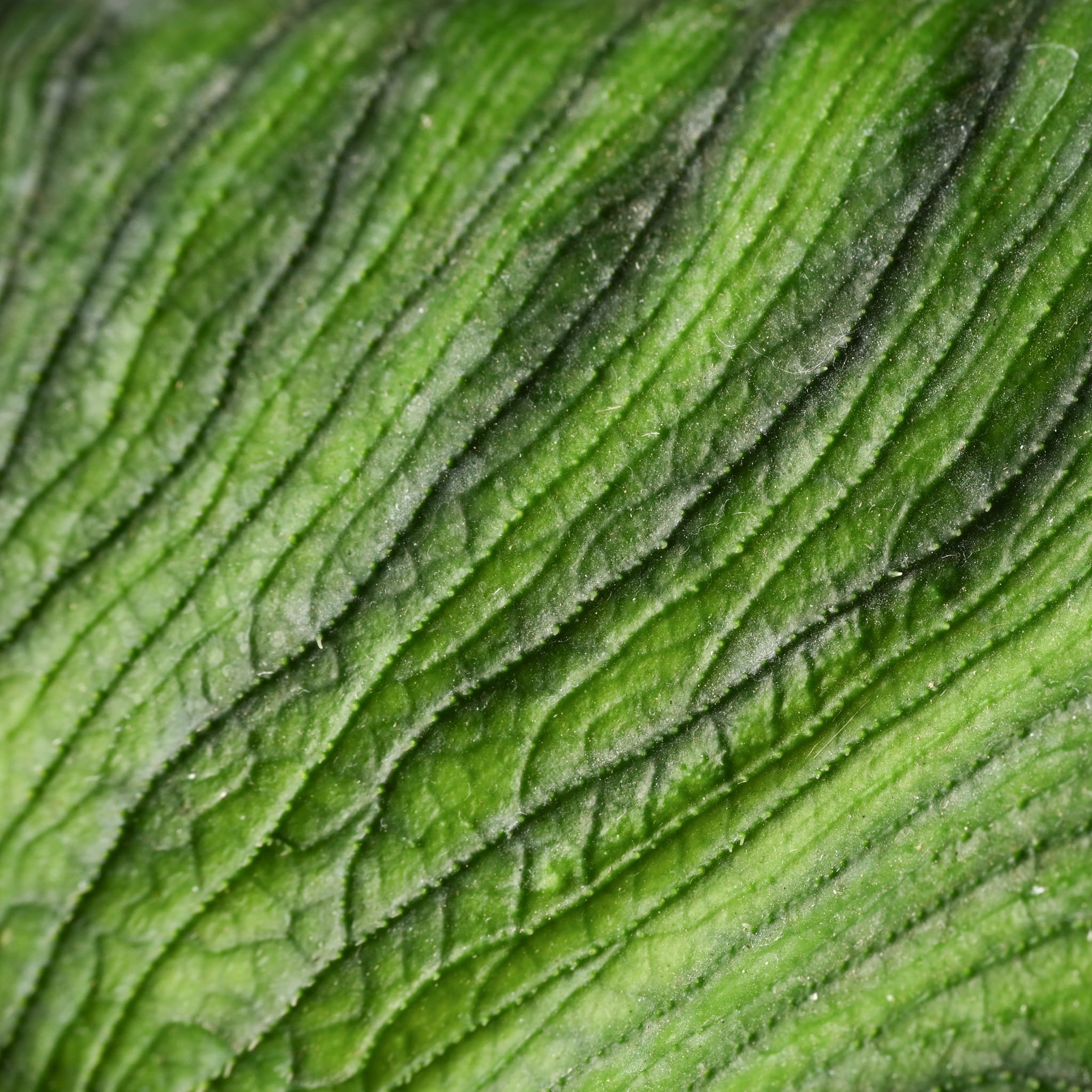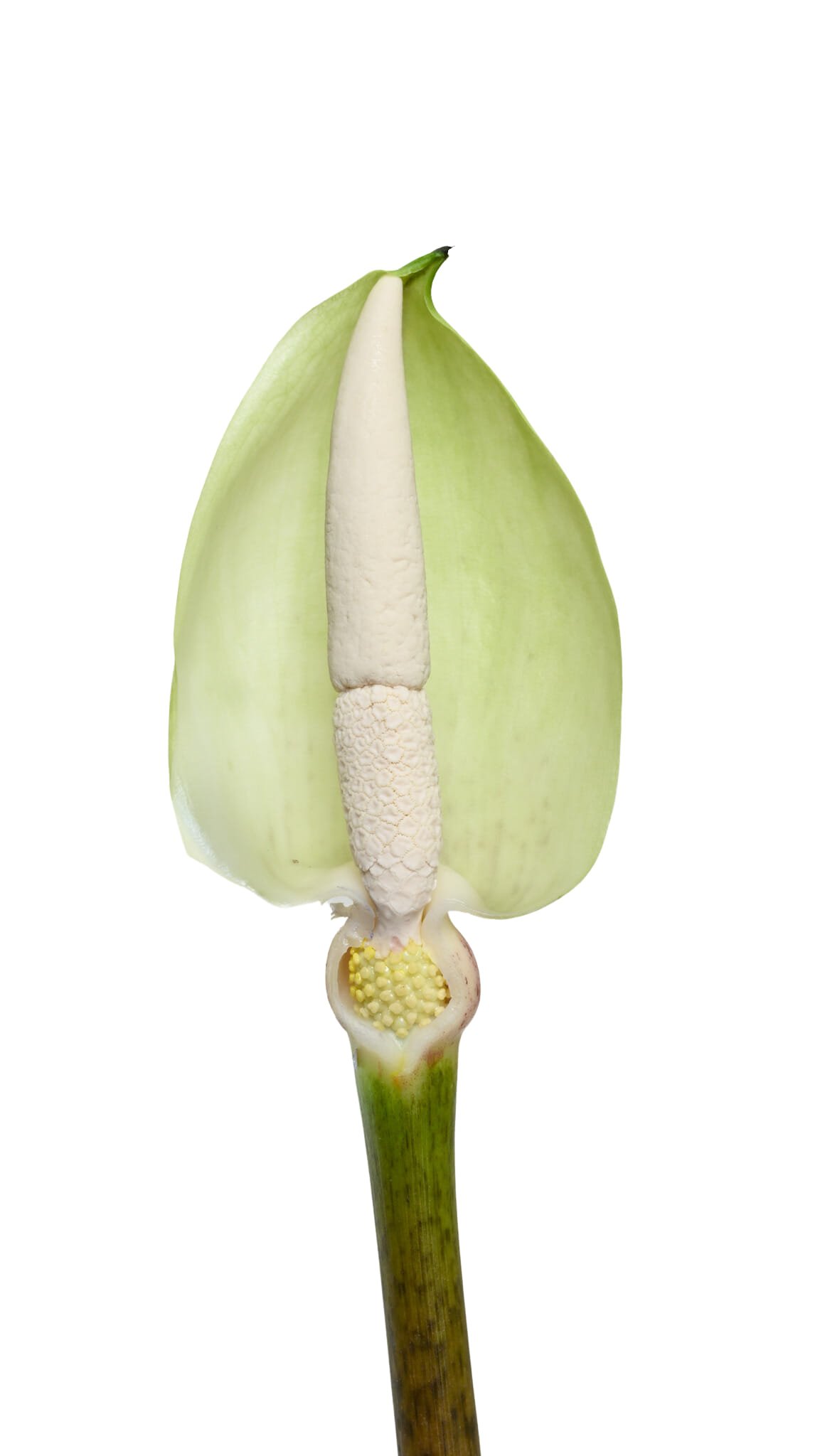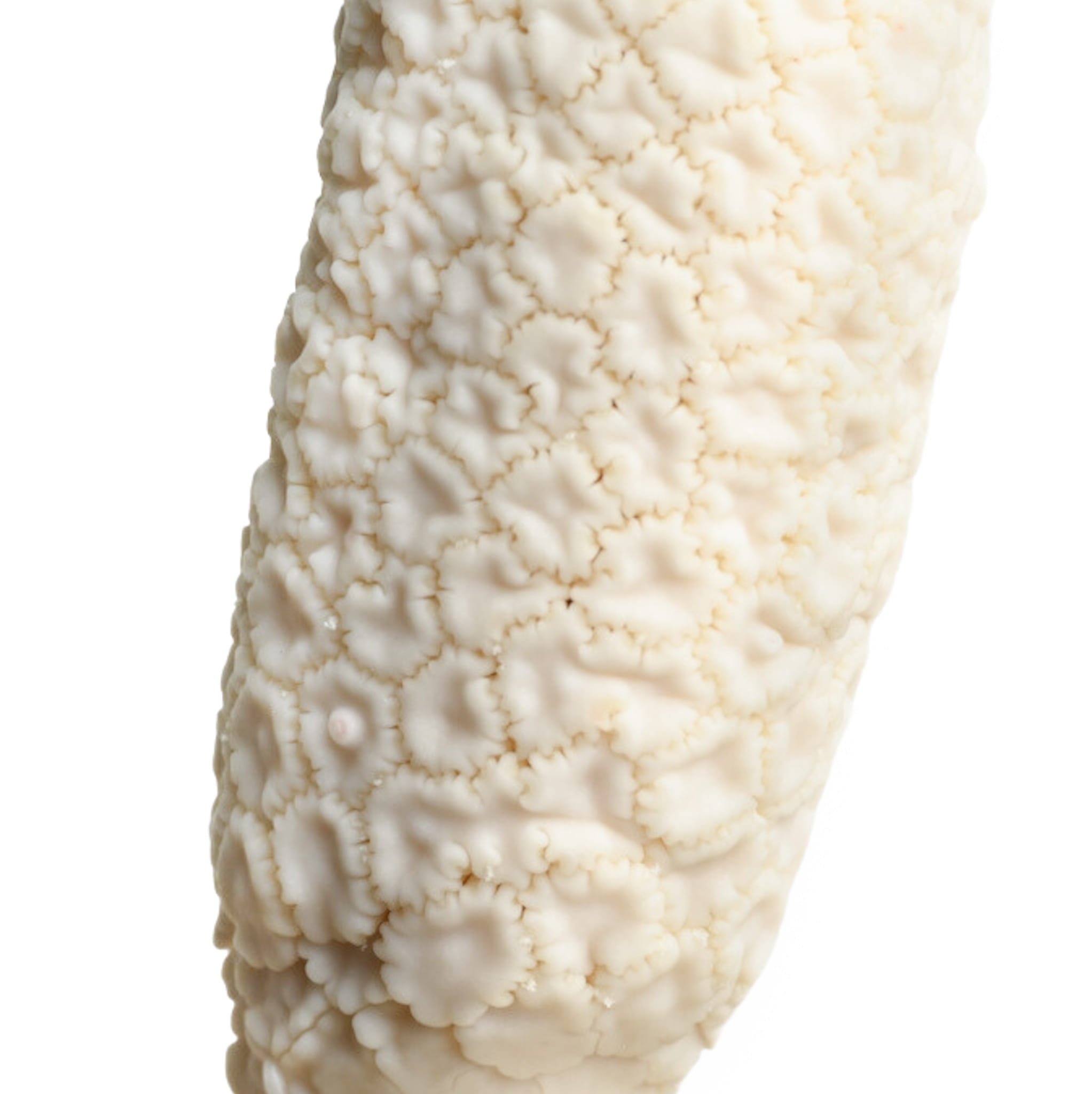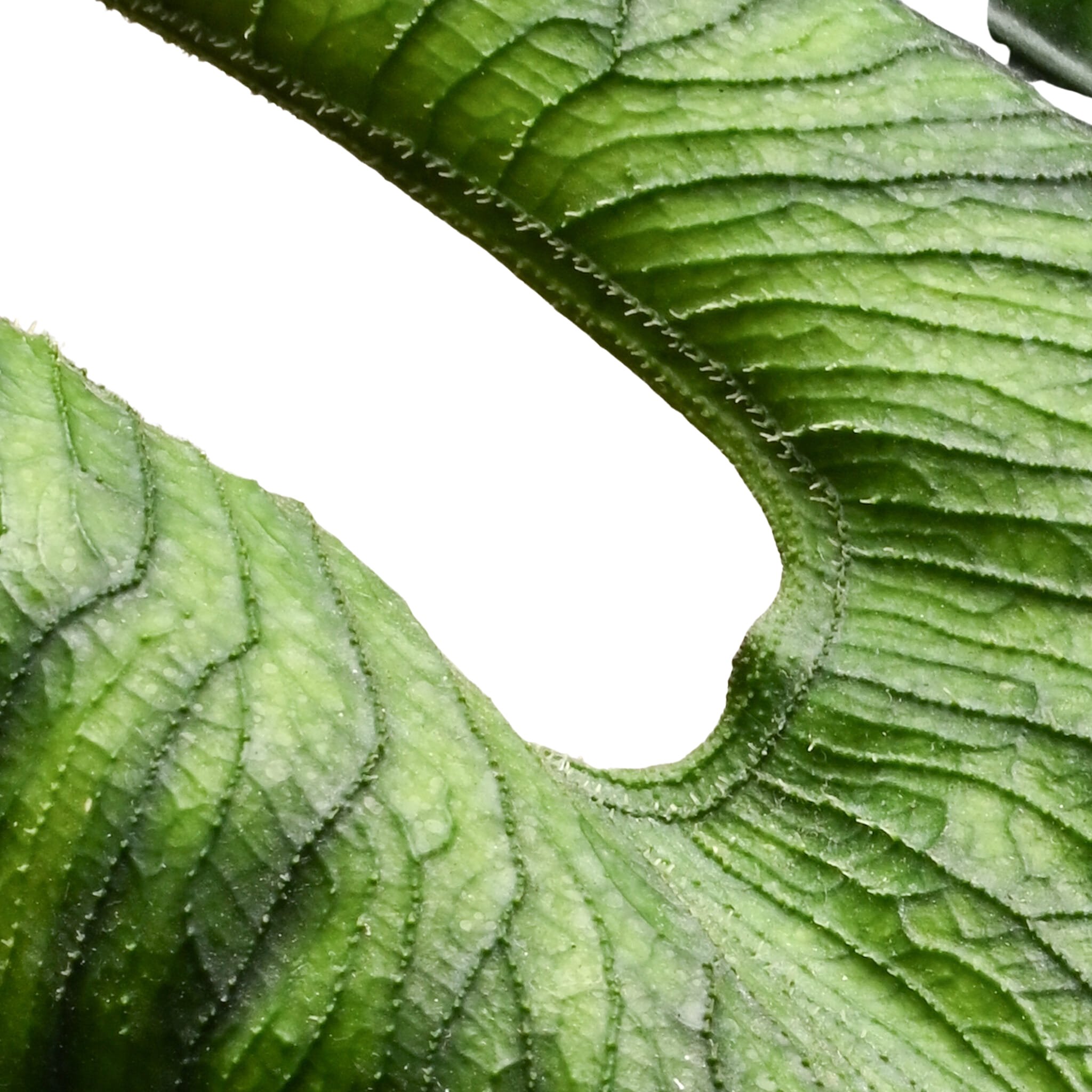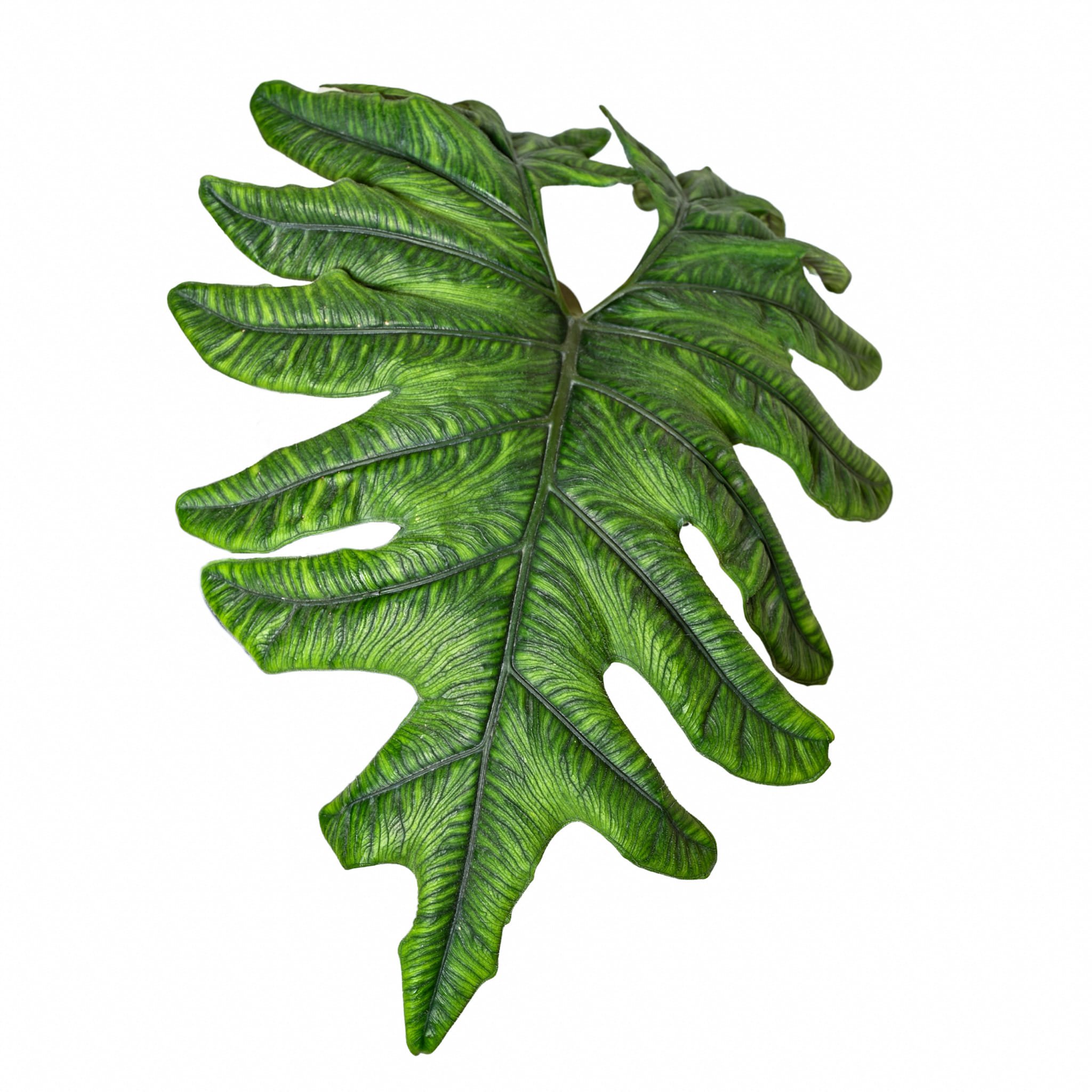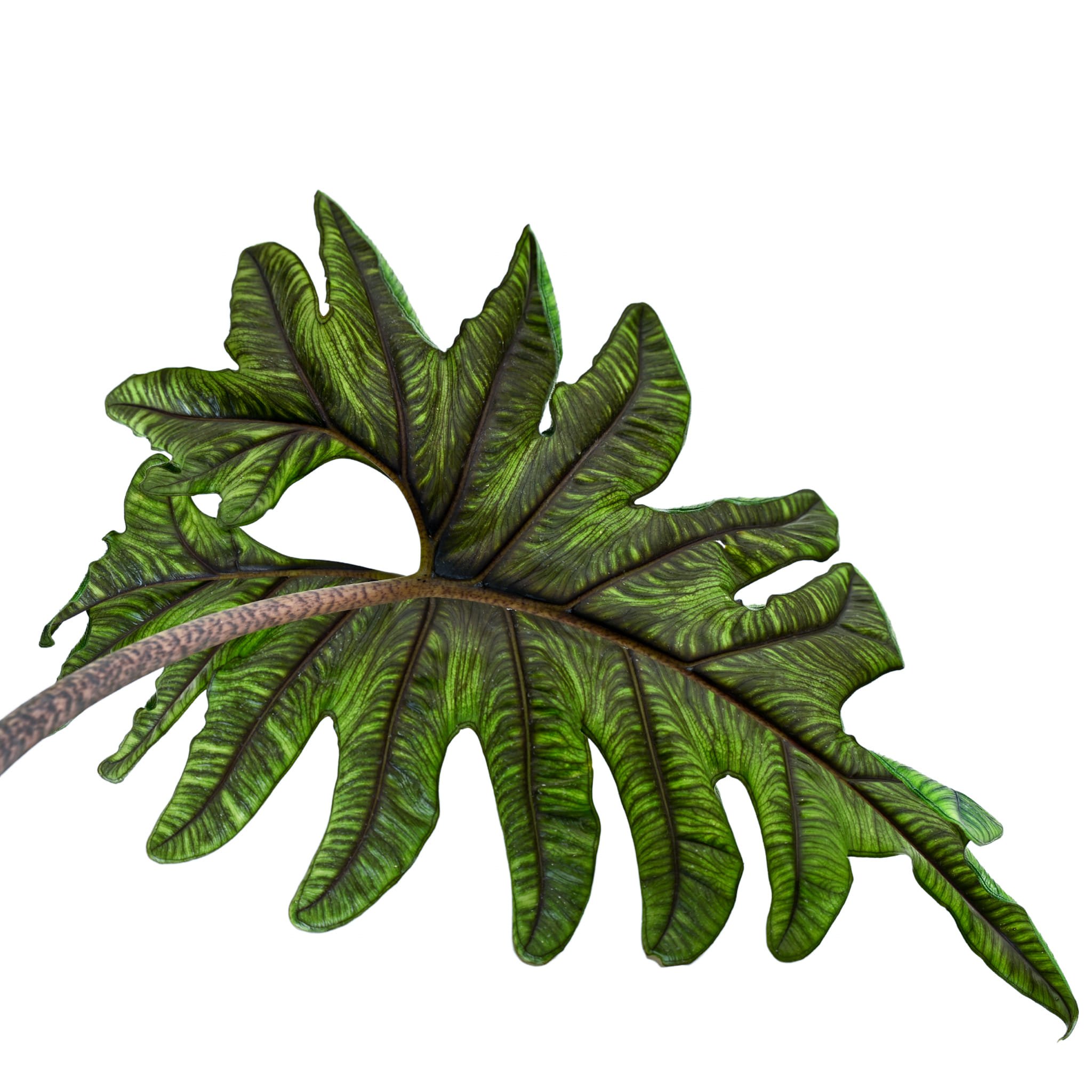ALOCASIA TANDURUSA
ORIGINAL DESCRIPTION:
Alocasia tandurusa Prameswara & A.Hay, sp. nov. — Type: INDONESIA. Jawa Barat: cult. Sukabumi, ex Sulawesi Utara: Bolaang Mongondow, [more precise original provenance withheld here: see below], 5 August 2023, Prameswara s.n. (holotype, BO)
Photo by mhmmdfaisal_plantshouse
SYNONYMS: Alocasia ‘Jacklin’, Alocasia ‘Jacklyn’ (a misspelling of the former), Alocasia ‘Tanduk Rusa’
DISTRIBUTION: Northern Sulawesi, Minahasa peninsula, Bolaang Mongondow Regency
Known with certainty only from Bolaang Mongondow Regency of Sulawesi Utara. Since the plant came to be known to horticultural collectors worldwide during the aroid-mania of the Covid pandemic, we understand that what is thought to be the main population has been severely depleted. Another, more remote and less accessible population is known at another locality.
While it has been conventional practice to state distributions with some precision when writing up new species, easy on-line access to accurate locality data for desirable plants is now resulting in unsustainable stripping of wild populations of aroids in many parts of the tropics worldwide. It is to be hoped that more effort is put into micropropagation rather than the extirpation of wild populations of ornamental aroids, as well as gate-keeping access to biogeographic data which is at present a free-for-all with the nearly 7 billion smartphones on the planet.
CLIMATE: Tropical humid climate
Humidity is moderate throughout the year, ranging from 60% to 70%
Temperature is varies between the seasons - within the range of 48°F/9°C to 88°F/31°C during the day. Minimum temperatures never dip below 45°F/7°C
Rainy and humid season (October to May) and a dry season between June and October. The average annual rainfall is 1,200 mm
ECOLOGY: Wet lower montane forest
SPECIES DESCRIPTION:
Alocasia tandurusa is similar in aspect to Alocasia nycteris Medecilo, G.C.Yao & Madulid (Philippines: Panay), but the new species differs in its proportionately shorter leaf sheath (ca. 17–20 % of the petiole length vs. 25–33%), more narrowly divergent posterior costae (usually ca. 60º vs. 85–95º) and consequently its more narrowly sagittate blade outline (vs widely triangular-sagittate), its often pubescent adaxial leaf surfaces (vs glabrous), its much more deeply lobed blade (divisions extending more than half way to the midrib, vs distinctly less than half way), its depressed-spherical (vs. ovoid) lower spathe, the female zone wider than long (vs. longer than wide). Moderately robust terrestrial herb to ca. 1 m tall; stem a usually curved (decumbent) rather short rhizome to ca. 7 cm diam. with prolific small angular-spindle-shaped tubercles more or less sessile on the rhizome; leaves 1–4 together, in new growth subtended by one or more membranous lanceolate cataphylls; petiole to ca. 75 cm long, sheathing in the lower 17–20%, speckled/mottled brownish to purplish; juvenile blades somewhat peltate and with sinuous margins; adult blade to ca. 70 cm long, deeply pinnatifid, with the lobes often slightly and irregularly (acroscopically and basiscopically) curved, and sometimes the lobes with one or two very short subsidiary lobes (i.e. the blade sometimes weakly bipinnatifid); anterior lobe [i.e. anterior part of whole blade] ca. 45 cm long, with 3 or 4 lateral lobes on each side, each with 1 primary vein running to the tip, the primary veins with occasional secondary veins when there is some secondary lobing; axils of primary veins and costae with flattened wax glands abaxially
Alocasia tandurusa, leaf blade from adaxial side
Alocasia tandurusa, leaf blade from abaxial side
Costae and primary veins abaxially prominent; adaxially impressed; sinuses between lobes u-shaped to wider and squared (sometimes in the same leaf); posterior lobes generally with 2 or 3 lobes on the acroscopic side and one on the basiscopic side; finer venation arising at a high angle (ca. 90º) from the primary and secondary veins and running to a prominent marginal vein, often but not always of a darker color than the lamina, quite prominent and pubescent on the adaxial surface and margin, or pubescence sometimes restricted to the margin in more mature plants; abaxial side of blade glabrous, sometimes suffused with or completely purple.
Alocasia tandurusa, detail of abaxial wax gland in axil of primary vein and midrib
Alocasia tandurusa, adaxial leaf blade surface showing raised tertiary veins with scattered pubescence
INFLORESCENCE:
Blooms 2 or 3 together; peduncles to ca. 26 cm long at anthesis, somewhat elongating and declinate afterwards; spathe ca. 12 cm long, very abruptly constricted between the lower spathe and limb; the lower spathe very short and depressed globose, ca. 2 cm long by 2.3 cm wide and tightly encasing the female zone, reddish, especially on the dorsal side; spathe limb ca. 10 cm long narrowly cucullate, greenish with some red speckling adaxially, the tip acute and apiculate; spadix slightly shorter than the spathe, ca. 11 cm long; female zone very short and squat, ca. 2 cm long, 2.3 cm wide; pistils crowded, pale yellow at female anthesis, the transition from fertile female to fertile male zones somewhat sigmoid; interstice between fertile zones very short and very abruptly narrowed, ca. 1.1 cm long, 0.7 cm wide, white, with the synandrodes weakly de"ned, becoming clearer in transition to base of fertile male zone; fertile male zone sub-cylindric, ivory white, 2.3–3 cm long, ca. 1.8 cm diam.; appendix tapering cylindric, abruptly di#erentiated from the fertile male zone by a narrow constriction, thence isodiametric at the base with the top of the male zone, ca. 5.8 cm long, 1.5 cm diam. at base, ivory, the surface faintly ‘brain-like’; ovaries sub-globose; style very short/none; stigmas bluntly 3–4-lobed; synandria crowded, 2–3 mm diam. (larger in the lower part of the zone), the tops centrally impressed, 4–5-staminate, the margins (from above) deeply incised and sinuous with the thecae reaching the top of the synandrium and not overtopped by synconnective; pollen shed and pollen not observed; infructescence not observed.
Alocasia tandurusa, bloom with spathe partly removed
Alocasia tandurusa, female zone, sterile interstice and base of male zone.
Alocasia tandurusa, synandria
VARIEGATED FORMS: WHITE, YELLOW, MOTTLED
ETYMOLOGY: The specific epithet for this species is an attempt at latinization of the Indonesian name ‘Tanduk Rusa’, meaning deer antlers, alluding to the deeply lobed and fuzzy leaf blades. Tandurusa is also a place name in Bitung district, Sulawesi Utara, but it is not clear that the plant is known from there. “Tandurusa” has been the vernacular name for the species in horticulture at least since 2007. Incidentally, Tanduk Rusa is also the local name for members of the Platycerium genus
NOTES:
Enjie Jacklin, a local of Gorontalo in Northern Sulawesi, bought the first few individuals of this species and popularized it online under the name Alocasia ‘Jacklin’. This did not sit well with a lot of Indonesian growers and collectors and they have since worked on the name Alocasia tandurusa
The relationships of this species are not clear from the morphology, and it is to be hoped that its placement can be established by molecular analyses — goodness knows it is now widely distributed enough through international horticultural networks for material to be available. A preliminary analysis including this species (under an informal trade name “Alocasia Jacklin”) has been inconclusive (Darupamenang et al., 2022). In the molecular phylogeny of Alocasia by Nauheimer et al. (2012a), Sulawesi species, which were in some cases represented by un-named elements, (there is indeed something of a stream of un-named Alocasia species from Sulawesi making appearances in social media), show relationships to the Philippines, Borneo, and to New Guinea/Australia.
It can at least be said with some confidence that Alocasia tandurusa does not bear any obvious phenotypic relationship to any species from New Guinea (Hay & Wise, 1992) nor to Alocasia brisbanensis (F.M.Bailey) Domin, the only Australian species (Hay, 1989, 2011). It seems more likely that Alocasia tandurusa will link to Philippines or Bornean species.
The dissected leaves themselves really provide no indication of relationship, because such leaves recur in several different, disparate Alocasia clades, though curiously hitherto confined geographically to New Guinea (e.g. Alocasia brancifolia (Schott) A.Hay, Alocasia lauterbachiana (Engl.) A.Hay, Alocasia boa A.Hay of the Xenophya Group sensu Hay, 1998), and the Philippines (e.g. Alocasia portei Schott which groups with Alocasia macrorrhizos (L.) G.Don (Hay, 1999), Alocasia sanderiana W.Bull which groups with some of the species of the Longiloba Group sensu Hay (1998, 1999), and Alocasia nycteris which is nested in a clade of Bornean endemics including, inter alia, the Scabriuscula Group sensu Hay (1998) (Nauheimer et al., 2012a)].
CULTIVARS: N/A
HYBRIDS: unreleased unnamed cultivar (Alocasia zebrina x Alocasia tandurusa)








